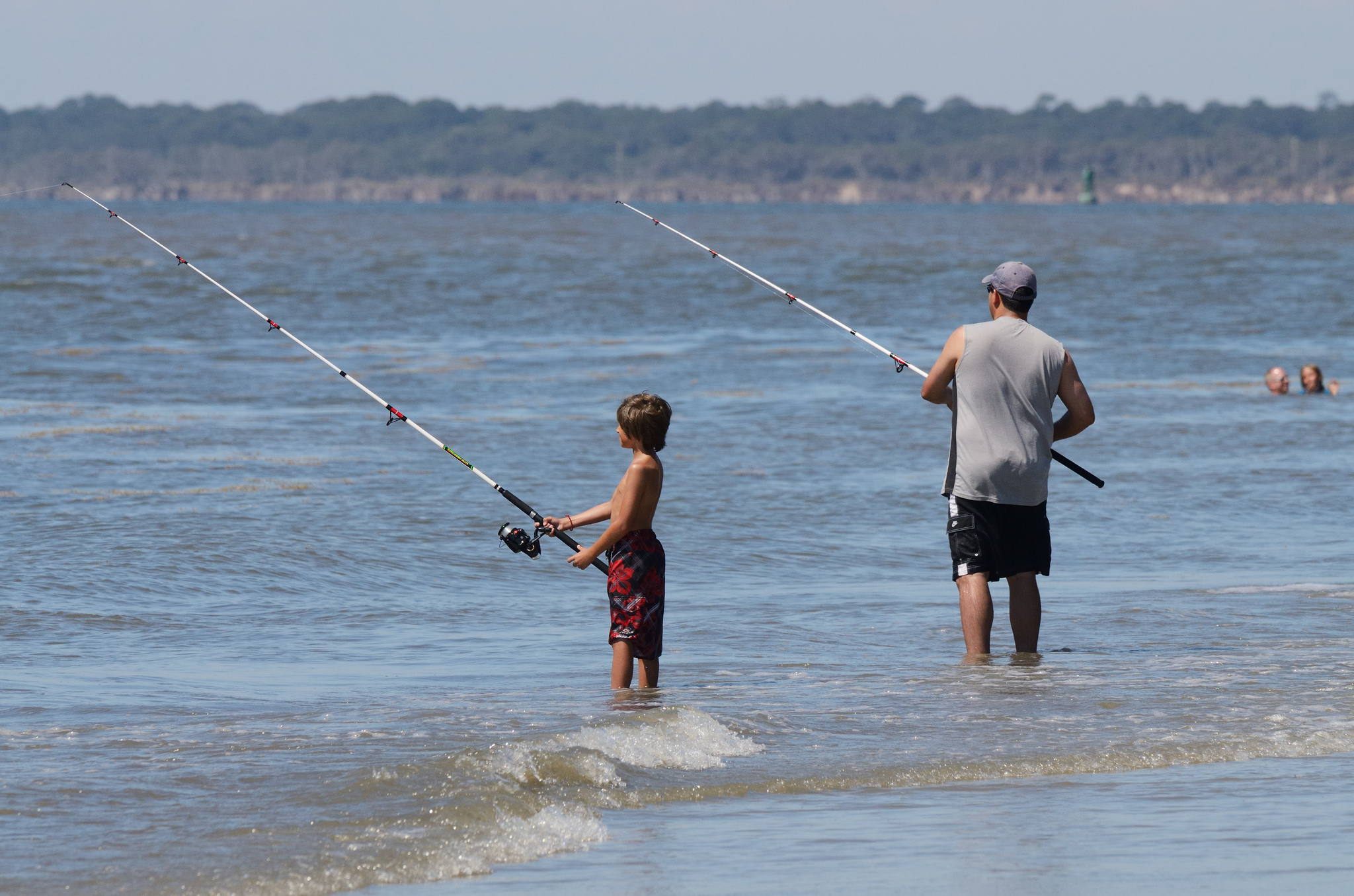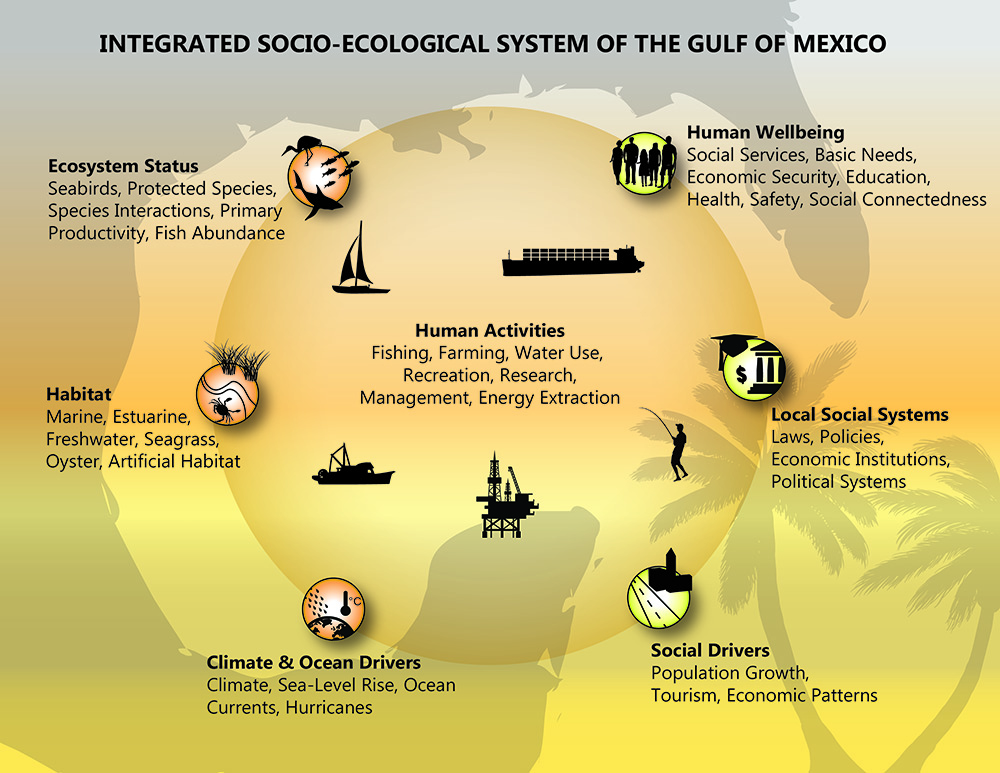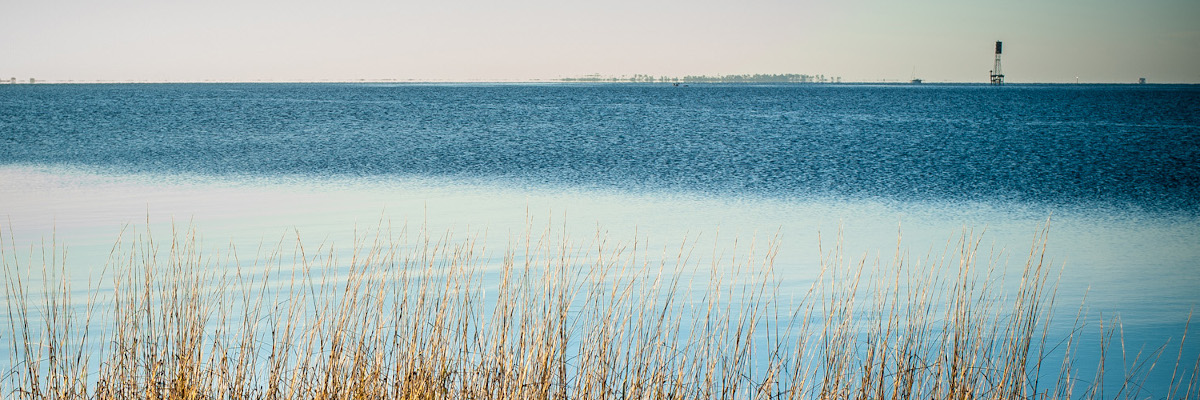In order to advance ecosystem-based management the Gulf of America Integrated Ecosystem Assessment team has sought the support and involvement of the Gulf of Mexico Fishery Management Council.

Including ecosystem science into fisheries management
Members of the Gulf of America Integrated Ecosystem Assessment program are working with the Gulf of Mexico Fishery Management Council, Council staff, and the Council’s Scientific and Statistical Committee to discuss ways to effectively incorporate ecosystem science into fisheries management.
Understanding the broader ecosystem picture and making linkages between different parts of the ecosystem and human activities when making fisheries management decisions allows managers to have a complete view of potential impacts and trade-offs to the fishery. This requires an expanded view through an interdisciplinary lens and underscores the importance of integrative science.
The council has begun to consider ecosystem science through several different actions.
Thus far the council has:
- Attended ecosystem workshops (nine throughout the Gulf in 2004-2010)
- Collaborated with 4 other Councils and NOAA Fisheries in an Attitudes and Value survey (Wallmo and Getner 2007)
- Conducted a series of Ecosystem Modeling workshops
- Provided comments on ecosystem related NOAA Fisheries products, such as the National EBFM Policy and the Gulf of Mexico Ecosystem Status Report
- Worked with collaborators (SEFSC and FWRI) to incorporate red tide events and impacts into reef fish stock assessments
- Established a Special Ecosystem Scientific and Statistical Committee (SSC)
To gain a better understanding of the broad status and trends of the Gulf of America ecosystem, Ecosystem Status Reports were produced in 2013 and 2017. Specifically, these reports are a synthesis of indicators representing core components of the ecosystem, ranging from sea surface temperature, to fish abundance, and human well-being. These reports provide an ecosystem-wide overview of the current state of the Gulf of America ecosystem so managers can have a more complete view of what is going on in the ecosystem and identify important considerations for management.
Managers, stakeholders, and scientists collaborate
Collaboration between all parties involved in fisheries management is essential to delivering the most effective recommendations and management plans and to ensure the wellbeing of all ecosystem components. At the 2017 Integrated Ecosystem Assessment Face-to-Face meeting, the Gulf of America IEA program hosted a panel of managers from various regions to facilitate discussion between researchers and managers. The Gulf of America IEA program’s staff contact at the Gulf of Mexico Fisheries Management Council, Morgan Kilgour, provided feedback from council members on what to include in the next Ecosystem Status Report, which included:
- Continued investigations into climate drivers
- Information on changes in species ranges and distribution
- A better understanding of the socio-economic effects of hurricane activity

Why we need ecosystem science in fisheries management
Single species stock assessments have been highly effective in guiding management on sustainable levels of fishing, and overfishing has nearly been brought to an end. Now, the more challenging task ahead is to optimize management, in order to achieve maximum benefit of the resource to human communities. While fishing rates are now at sustainable levels, and stock biomasses are generally increasing, not all stocks have recovered as fishing pressure has been reduced. This suggests that broader ecosystem or management factors may be at play and are potentially inhibiting full recovery. A complete understanding and consideration of the ecosystem and what impacts fisheries have could provide more support to address this issue.
Another complex issue that frequently arises is how to fine-tune management by moving from maximum sustainable yield (MSY) to optimum yield (OY). While MSY is considered the most suitable reference point for setting fish levels based on biological information, OY requires consideration of economic, social, and ecological factors, and thus inherently necessitates a broader ecosystem approach. Developing OY also requires an understanding of the range of desired endpoints of fishery management; for example, commercial fishermen might place high value on catch rates and profit, whereas recreational fisherman may put greater value on access or days at sea.
In order to advance ecosystem science and explore ways to optimize management, the Gulf of America IEA team has sought the support and involvement of managers and stakeholders from around the Gulf of America.
While recent fisheries management has generally been effective in rebuilding or maintaining most stocks at sustainable levels, future management may need to adapt to a changing ecosystem, including a changing climate and growing human population. Because of this, a collaboration between researchers and managers is essential to delivering the most effective recommendations and management plans and to ensure the wellbeing of all ecosystem components.
